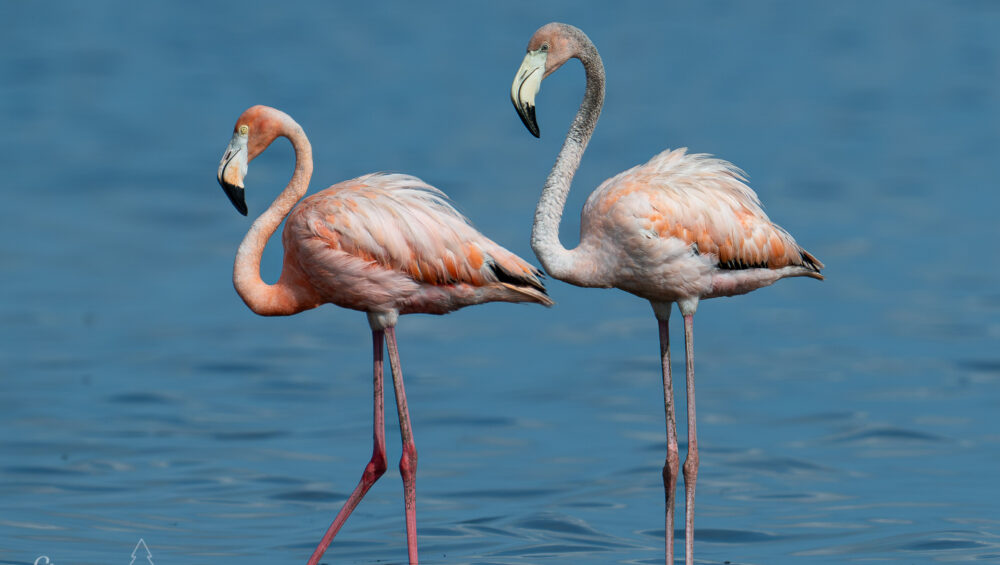
In July I took a few days to head to Florida to do some photography with a friend. During the trip, we photographed a group of fascinating American Flamingos. Below is some interesting facts about Flamingos and their history in Florida, plus, some photos from my trip.
The American Flamingo (also called Caribbean Flamingo) once flourished in and around the Caribbean, Galapagos Islands, West Indies, Yucatan Peninsula and Southern Florida. They are still present in all these locations, but at the turn of the 20th century, numbers were in a free fall.
Much of the Florida’s 1800’s population of Flamingos were in Southern Florida and what is now Everglades National Park. In the 1900’s Florida’s Flamingo population hit an all time low between 1940-1950. In the mid 1950’s small pockets emerged as well as some captive groups in South Florida.
More recently hurricanes have scattered individuals as well as small groups around the Eastern US and as far away as Wisconsin. Hurricanes have played a roll in dispersing the American Flamingo back into Florida and other parts of the United States. In 2023 Hurricane Idalia pushed many groups of Flamingos from the Yucatan Peninsula and Caribbean Islands into Florida once again.
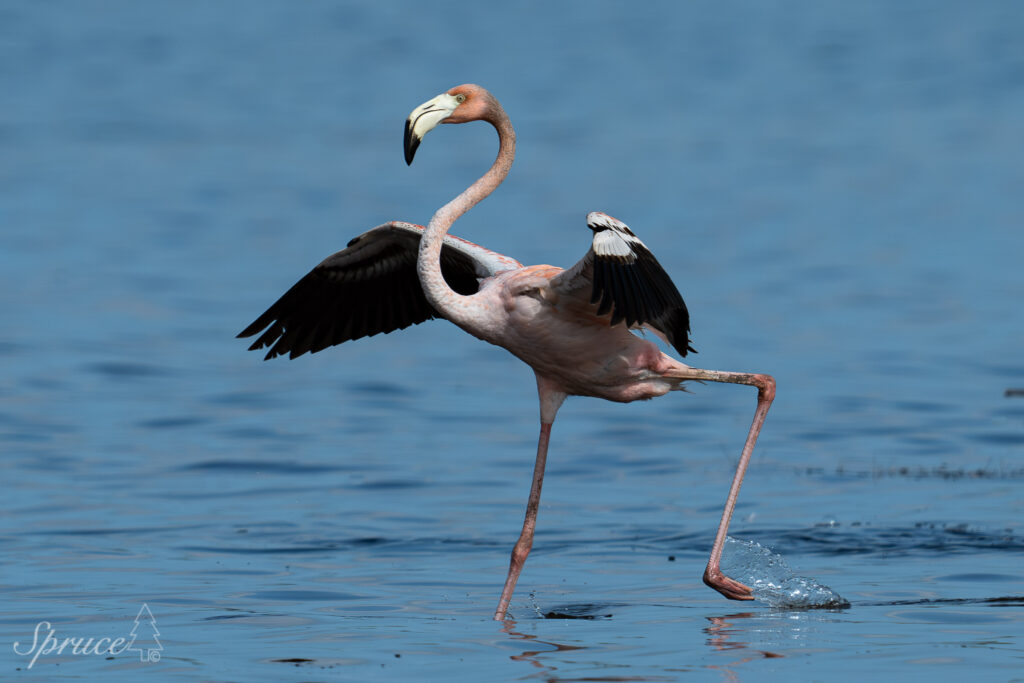
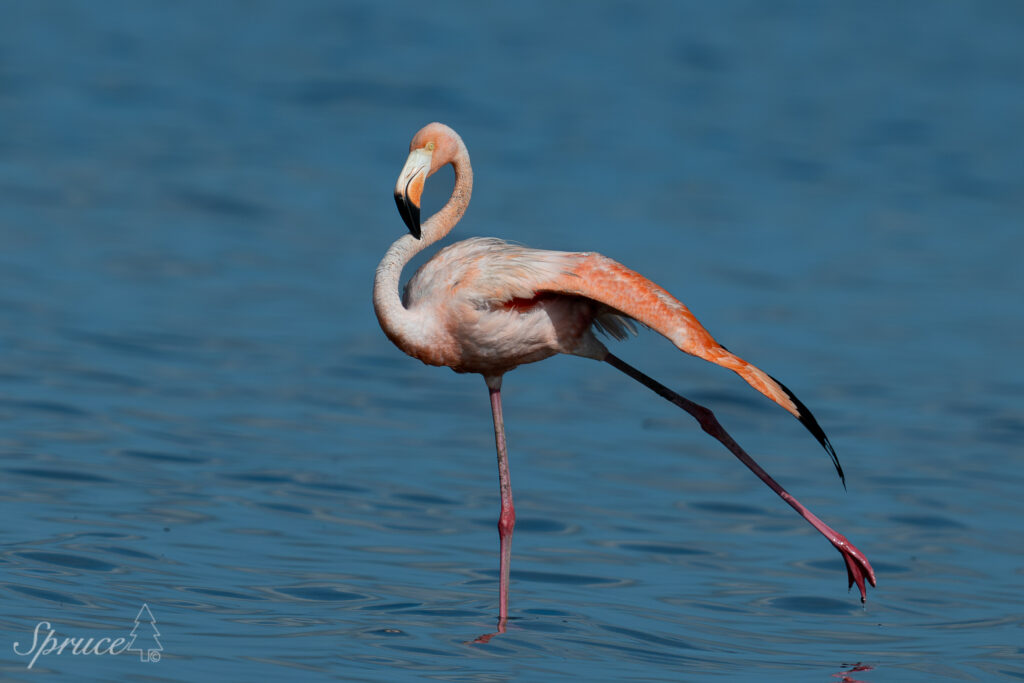
American Flamingos are hatched white and become mostly gray for the first two years of life. In the 3rd year they start getting some pink plumage and are slowly becoming sexually mature. They usually look to breed by year 5 and their plumage has the beautiful pink coloring that we know. Individuals are 4-5 feet tall and weigh 5-6 pounds. The call of a Flamingo is a goose like honking.
Most people believe that American Flamingos eat only shrimp. Although shrimp is a staple in their diet they also eat other crustaceans, mollusks, worms, insects and larvae, small fish, grass seeds, algae and even decaying leaves. Such a diverse diet helps when these birds bounce from area to area especially after being pushed by storms from their original breeding grounds.
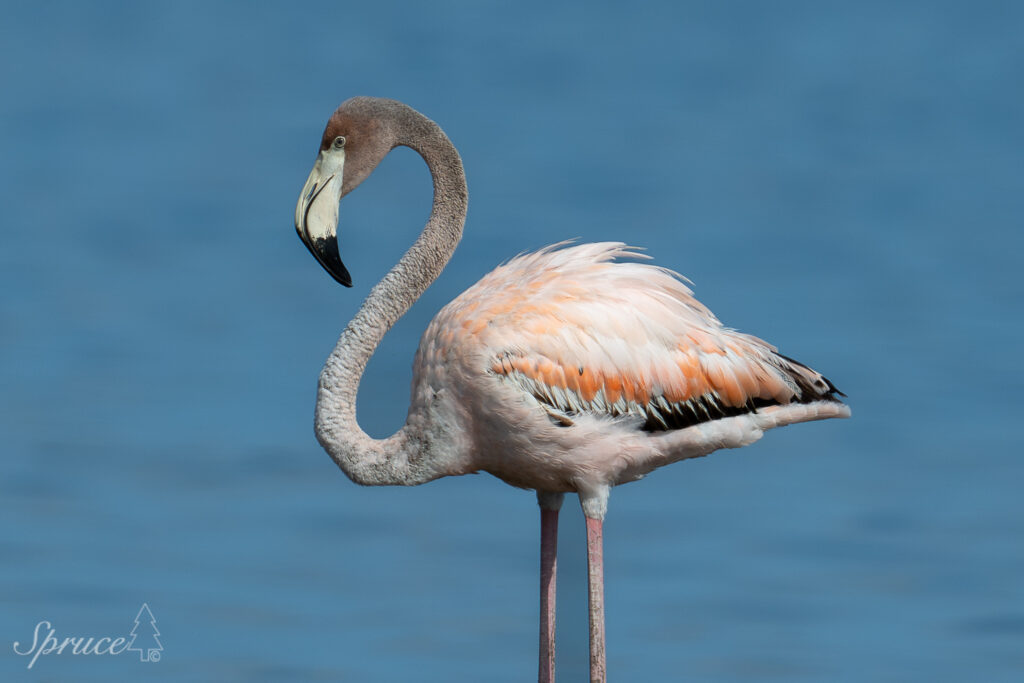
It was an amazing experience photographing these unique birds in Florida. On this same trip I additionally photographed swallow-tailed kites, sea turtles, and rhesus macaques. My next Florida trip will be February 4 – 8 for the 2025 Florida Owl and Bird Workshop. If you love owls, raptors, and photography, join us on this small group workshop!
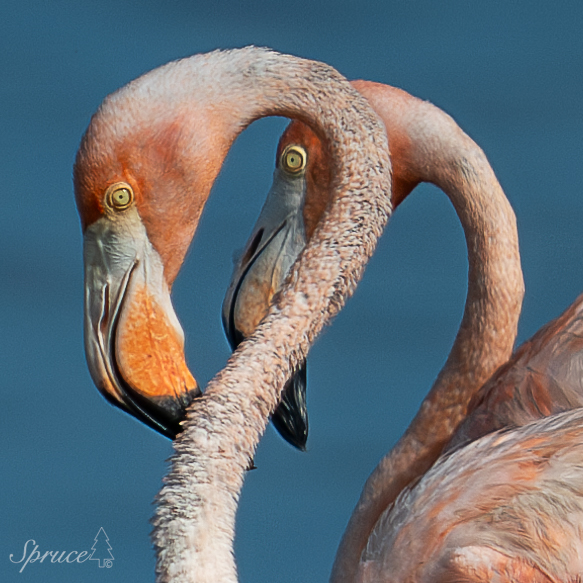
References: Wikipedia contributors. “American flamingo.” Wikipedia, The Free Encyclopedia. Wikipedia, The Free Encyclopedia, 22 Jul. 2024. Web. 4 Aug. 2024
